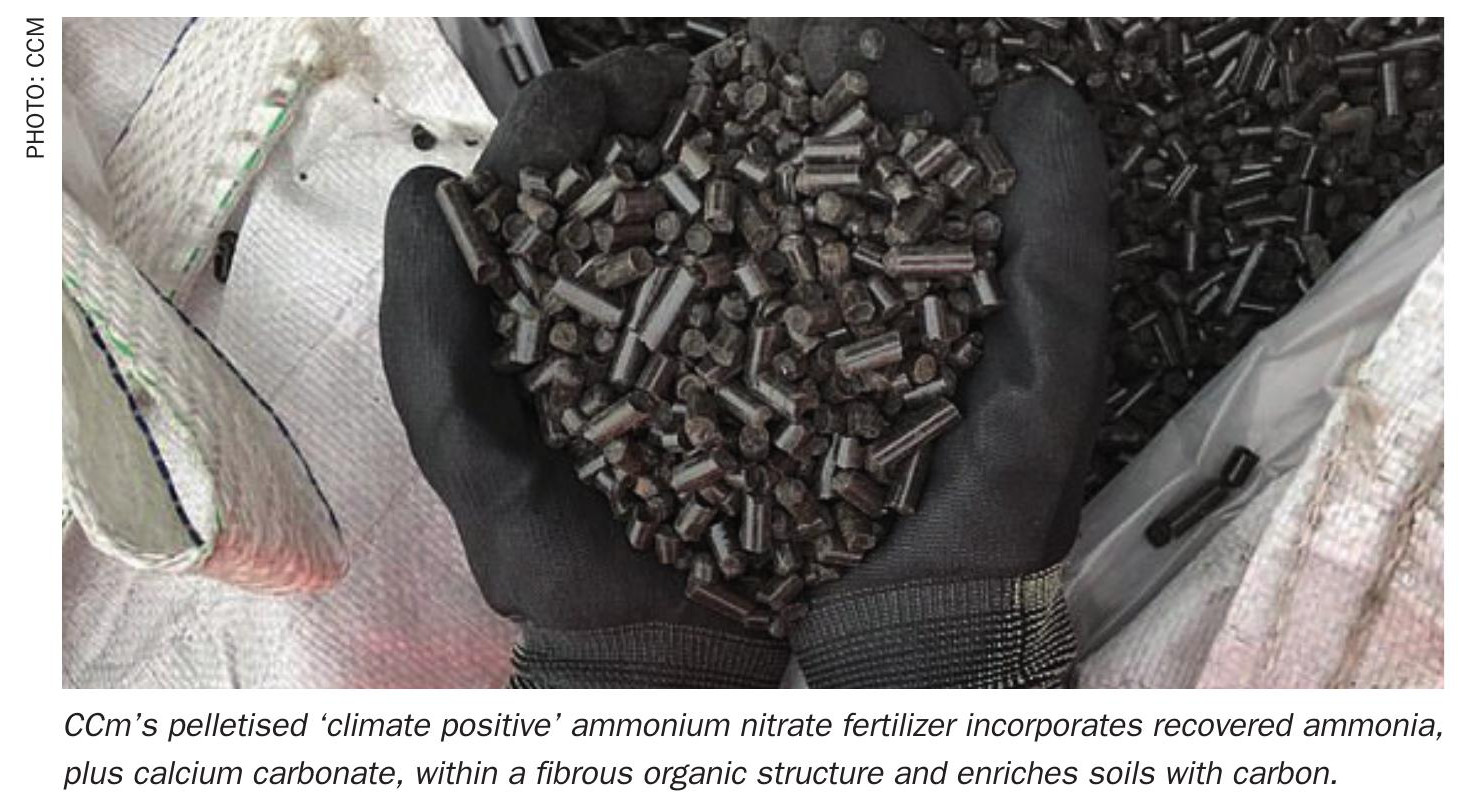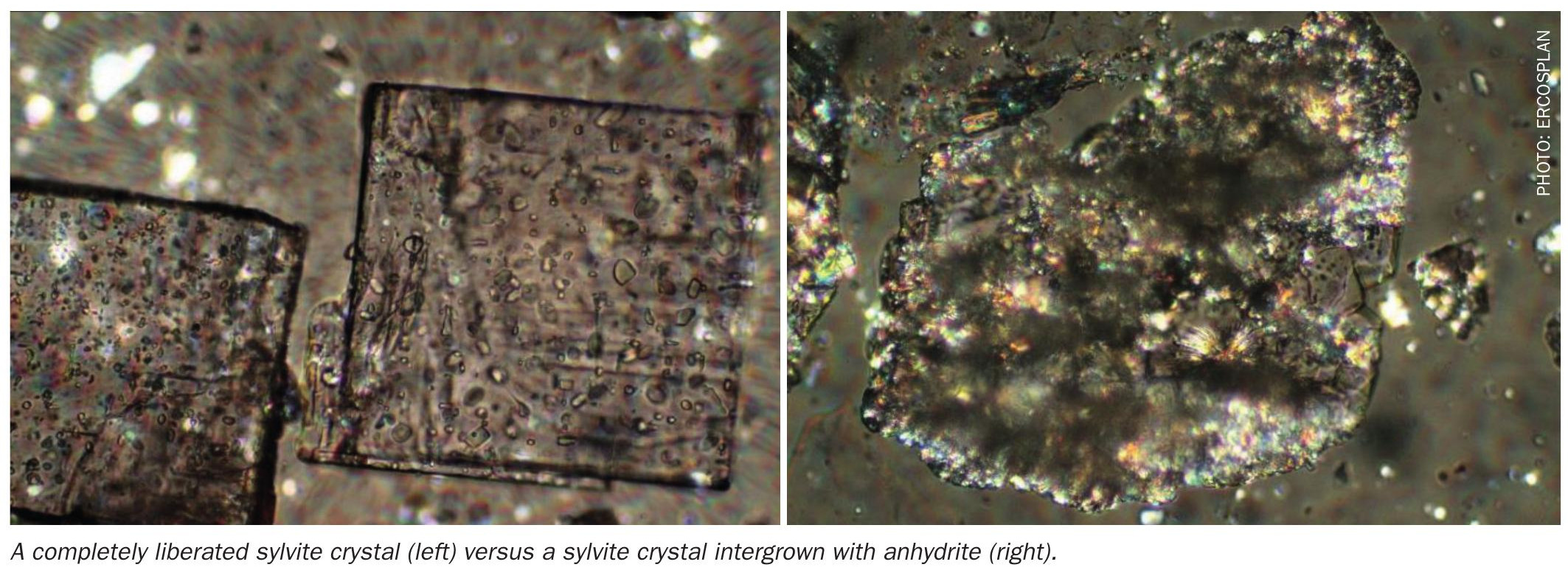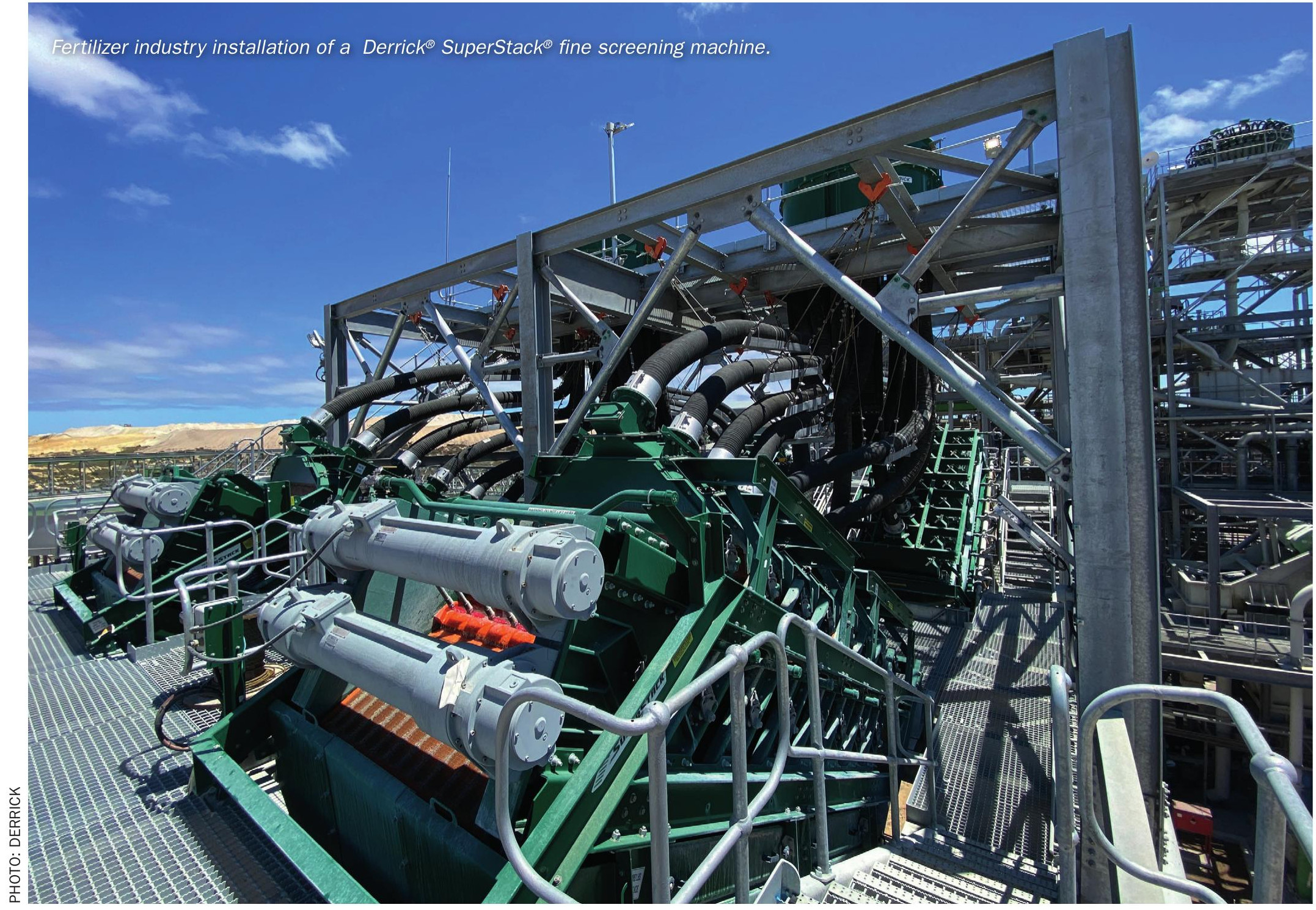Fertilizer International 520 May-Jun 2024

31 May 2024
Boosting UAN efficiency with inhibitors
ENHANCED EFFICIENCY FERTILIZERS
Boosting UAN efficiency with inhibitors
Urease and nitrification inhibitors are cost efficient and easy to implement solutions for improving the nitrogen use efficiency (NUE) of urea ammonium nitrate (UAN). The use of inhibitors enables farmers to substantially reduce nitrogen losses and achieve their environmental targets, explains Thomas Profitt, Syensqo’s Global Enhanced Efficiency Fertilizer Manager, while improving crop yields and generating a positive return on investment.
UAN – a major US and European nitrogen fertilizer
Urea ammonium nitrate (UAN) is a 20 million tonne global market (UAN 30 basis), representing 5.5 percent of total agricultural nitrogen use (Figure 1). Due to regional buying preferences, consumption is concentrated in North America and Europe, where UAN accounts for around 24 percent and 13 percent of agricultural nitrogen use, respectively. UAN contains three different types of nitrogen with:
- 50 percent in ureic form
- 25 percent in nitrate form
- 25 percent in ammonium form.
Three main UAN grades are produced – UAN 32, UAN 30 and UAN 28 – reflecting their nitrogen content of 32 percent, 30 percent and 28 percent, respectively (Table 1). UAN is generally traded and shipped as the more highly concentrated
UAN 32 and then diluted at the destination port to generate UAN 30 or UAN 28, the exact choice of product being determined by the severity of winter conditions and the need to prevent freezing during farm storage.


UAN is often blended with ammonium thiosulphate (ATS) or ammonium sulphate (AS) to create the popular liquid NS blends that are typically applied to cereals and oilseed rape.
UAN production is mainly located in the United States, Russia, Trinidad, Egypt and eastern Europe. The price of UAN 30 has varied widely over the past four years, rising from €160/t in 2020 to €700/t in 2022 before falling back to around €220/t at port currently.

Why do farmers prefer UAN?
UAN is often one of the first input purchases made by farmers during the growing season, typically costing over €150/ ha for a nitrogen application rate of 200 kg/ha. For farmers, the main perceived benefits of UAN – thanks to its liquid form – are its simplicity in storage, handling and application.
The ability to use the same sprayer as other agrochemical applications along the same field track is also an advantage. Having a spray width of up to 48 metres with automatic GPS control gives farmers the necessary precision and enables night-time applications.
As farm sizes have expanded, with less labour and the narrowing of the ideal application window, farmers are increasingly forced to apply their fertilizer products in unfavourable weather conditions. This carries a significant risk of crop yield loss, wasted input costs and a poor return on investment.
Nitrogen use efficiency well below 100 percent
The urea content of UAN (50%) can be volatilised as ammonia and lost to the atmosphere (Figure 2). In dry conditions, with wind and a high pH, up to 45 percent of applied urea can be lost to the crop.
These volatilisation losses can, however, be drastically cut using urease inhibitors. In 2021, the addition of an NBPT urease inhibitor in four field trials in France, for example, reduced average nitrogen volatilisation from 10 percent to 2.5 percent, reducing nitrogen losses by a factor of four1 .
NBPT helps to slow the urease reaction in soils by acting as a competitive enzymatic inhibitor that delays the conversion of urea into ammonia (NH3 ). This provides time for the urea to migrate from the surface and penetrate deeper into the soil profile, where NH3 cannot volatilise when the conversion occurs.
Since 2023, the use of urease inhibitors with both UAN and urea has been compulsory in the UK for applications later than the 31st March2 .
Up to 30 percent of nitrogen leached
Both the urea and nitrate forms of nitrogen are prone to leaching if significant rainfall occurs following application. Factors such as high application rates, the presence of sandy soils and infrequent fertilizer applications – which result in a longer time interval between application and crop uptake – all increase the risk of leaching.


Soil bacteria convert the ammonium (NH4 ) present in nitrogen fertilizers into the soluble nitrate (NO3 ) form that is more prone to leaching – a process known as nitrification. The use effective nitrification inhibitor, such as Syensqo’s AgRHO® NH4 Protect, can therefore help prevent leaching.
AgRHO® NH4 Protect is unique to the market as it contains the active ingredient DCD in a fully solubilised form. It has a ‘bacteriostatic’ action and functions by temporarily preventing nitrosomonas bacteria from multiplying on contact with nitrogen fertilizers. This reduces susceptibility to leaching by preserving NH4 for longer and providing the plant with more gradual NO3 nutrition. A reduction in nitrous oxide (N2 O) emissions is another benefit reported in the literature.
AgRHO® N Protect is part of range of urease and nitrification inhibitors from Syensqo that can be customised for a wide range of soil and weather conditions (Figure 3).
Using the AgRHO® N Protect urease inhibitor with UAN
AgRHO® N Protect is certified for the European market under regulation EU 2019/1009. Because its active NBPT ingredient is only stable for a few days when mixed with UAN, this inhibitor product is most commonly added by the farmer just before application from a canister. Advantageously, AgRHO® N Protect gives growers the flexibility in terms of when to select and where to use a urease inhibitor. Its use rate can also be adjusted for the volatilisation intensity.
For volatilisation, the degree of mitigation offered by AgRHO® N Protect is directly proportional to the concentration of active NBPT ingredient. A recommended use rate of 1.35 l/m3 for UAN 30 (equivalent to 390 ppm of NBPT per m3 of UAN 30) generally provides growers with the optimum cost/ efficiency ratio.
The effects of NBPT dosage on volatilisation can be measured using sensor tubes, as shown by Table 2. Tube saturation is reached after 116 hours at half the recommended dose of NBPT
(200 ppm), with this increasing to 156 hours at the full recommended dose (390 ppm). The full NBPT dosage therefore results in much greater inhibition of volatilisation versus the half use rate – the result being that more nitrogen will end up in the crop with less ending up in the environment.

Syensqo’s partner OMEX, in association with Velcourt, carried out an AgRHO® N Protect® trial on winter wheat in Cambridgeshire in the UK. This demonstrated the field benefits and agronomic value of AgRHO® N Protect® by assessing the reduction in volatilisation losses from UAN applications at different times. Spring soil analysis indicated 50 kg N in the soil down to 60 centimetres.
The UK trial examined the yield response of winter wheat to UAN for two surface nitrogen applications. The protein content of the wheat, a quality parameter, was also measured. The effects of adding AgRHO® N Protect® to just one application (1N) or both applications (2N) were studied.
The optimum N application rate for the wheat crop at this UK field location was 180-200 kg/ha, based on the yield response curve (Figure 4). The addition of AgRHO® N Protect® at this optimum application rate (180kg N/ha) delivered significant yield benefits (+500 kg grain). Overall. incorporation of AgRHO® N Protect® as part of the full fertilization programme achieved +200 kg of additional grain yield.
UAN plus AgRHO® NH4 Protect
Soil nitrification incubation tests were used to measure the effects of the nitrification inhibitor AgRHO® NH4 Protect on the conversion of NH4 + into NO3 – in a standard soil at 28°C. Results show that adding AgRHO® NH4 Protect (5 l/m3 ) to UAN 30 doubled the time taken for nitrate conversion (200 kg N/ ha threshold) to 28 days, versus 14 days for the untreated UAN 30 control (Figure 5).

To ensure its safety and efficiency, AgRHO® NH4 Protect is registered in France under ANSES No 1170075 and No 0211081 and in the wider EU market under regulation EU 2019/1009.
The additional benefits of adding AgRHO® NH4 Protect to UAN were confirmed in five corn crop trials in the United States. In trials carried out at four sites in Illinois and one site in Indiana, the addition of this nitrification inhibitor delivered an average corn yield improvement of 0.7 t/ha versus the untreated UAN control (Figure 6).

Conclusions
Urease and nitrification inhibitors are effective technologies with a proven ability to increase nitrogen use efficiency (NUE), as shown by this article and demonstrated in numerous laboratory and field trials. The cost efficiency of these inhibitors offers farmers an unbeatable approach to reducing nitrogen losses (NH3 , NH4 and N2 O) that typically generates a return on investment (ROI) of around 300 percent.
References






